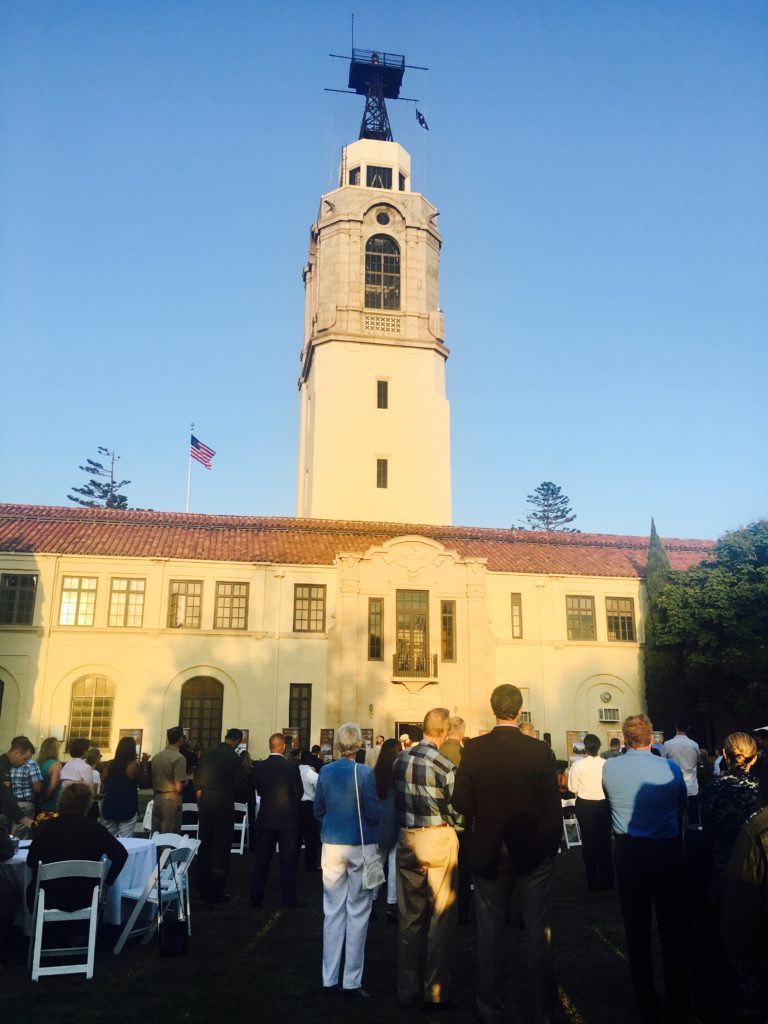
On Friday August 11th, under a perfect Southern California sky, the kick-off reception for the Naval Air Station North Island Centennial celebration was held. Behind the historic building 8, many gathered to celebrate 100 years of Naval Aviation. Some Coronado officials were in attendance, such as City Manager Blair King, former Mayor Casey Tanaka, City Councilmember Carrie Downey, and local area flag officers and generals. Looking around at the individuals in attendance, there were aviators that have been around this community for years, as well as those new to aviation. The evening started out in the courtyard behind the building. The Navy jazz band played tunes in the background (they did a fantastic job), while under white tents hors d’oeuvres and drinks were served.
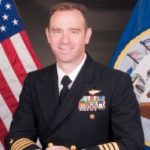
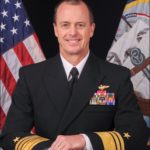
Opening remarks were made by Commander, Naval Air Forces, Vice Admiral Mike Shoemaker, followed by Captain Scott Mulvehill, Commanding Officer of Naval Amphibious Base Coronado. In their remarks, both gave a nod to those who have gone before, they talked about Naval Aviation and what effect it has had on war fighting capabilities and defense, as well as the rich history of naval aviation and NAS North Island. The history of building 8 (if you are familiar with the base, it’s the building with the tower on it) is that it was the original headquarters when the war department assumed control of North Coronado Island and NAS San Diego in 1918, with the original purpose to serve as the control tower for early flights and landings. This beautiful building was designed by Bertram Goodhue, the same architect that designed some Spanish Revival Style buildings in Balboa Park.
NAS North Island is known as “The Birthplace of Naval Aviation.” In January 1911, two Navy and three Army air officers were the first group of men to be trained to become pilots at NAS North Island. After the completion of their training, the Navy then purchased four A1 Triad’s for $4,400 each (which could be compared to the current day cost of the Joint Strike Fighter to the tune of hundreds of million dollars, each).
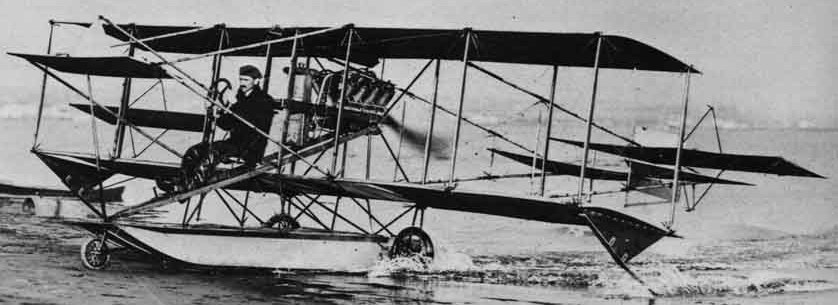
These aircraft were basically “kites with a motor” said Vice Admiral Shoemaker. What was most interesting was the importance of communication, even in the early days of aviation. Before the days of radio communications, the Navy utilized a flag system to communicate with aircraft and ships. You will see that that is still a Navy tradition aboard ships.
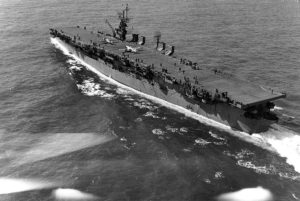
In 1922, the USS Langley (a retrofitted coal ship) was commissioned; this would have an exponential effect on how naval aviation would function for current and future pilots, and aircraft carrier functions and capabilities. By the time the United States entered in WWII, the Navy had seven combat aircraft carriers, 4,700 aircraft, and around 6,000 qualified pilots. In 1942, Naval Air Forces, Pacific Fleet was established to oversee the fast growing naval forces in the Pacific, stationed in Hawaii until 1949 when it was moved to NAS North Island. The Navy continued to build aircraft carriers, build aircraft, and train aviators. In the 1940s, the first aircraft carrier of its time, a trailblazer for future carriers, was built. It had a flight deck and catapults much like the carriers we know today, eventually known as “super carriers.” Today’s Naval Aviation includes 11 nuclear powered carriers and more than 3,600 aircraft, and those two components employ more than one third of the Navy’s employees (which is around 320,000 officers and enlisted sailors). Vice Admiral Shoemaker went on to talk about the importance of the people that serve in the Navy. “While the equipment is advanced and is impressive by any measure, it is our people that give us the asymmetric advantage we enjoy over all the navies around the world. I could not be more proud of the men and women in Naval Aviation and what they are doing flying from our carriers and expeditionary ships. Naval Aviation has come a long way in the last 100 years, this installation has been an integral part of that history, and I imagine it will remain so for the next 100 years.”
As the evening continued, it was great to see old friends reunited, hear stories that started with “I remember this one flight, or that one time…” It was impressive to look over the crowd and comprehend the talent, education, and years of experience represented. One theme remained throughout the night — that Naval Aviators truly are a brotherhood (and “brotherhood” is a term to represent all genders) bound by the love of flying, a love of service, and being a key component of the United States Navy and its defense capabilities. As the sun set, the conversations continued, the inside jokes, the laughter, and joy.
Throughout the 100 years of Naval Aviation, there have been those that have given all in the name of freedom. My friend Theresa Jones had the opportunity to speak with retired Naval Aviator Rodger Welch about this very subject. Rodger is the son of Clyde Ray Welch, who perished along with 43 other sailors aboard the USS Oriskany in 1966 when it caught fire. Rodger talked to Theresa about his father’s death and the profound effect it had on him. She is facing those very same issues with her son, after she lost her husband Landon Jones in September 2013 when his MH-60S was swept overboard the USS William P. Lawrence. It was comforting to know that Rodger was so willing to share what he learned along his journey of what he called “chasing a ghost,” and the impact it had on his life, his decisions to go into the Navy, and to become an aviator. Theresa told me later, “I loved how Rodger kept talking about how we are all family. It didn’t matter where or when you served, but Naval Aviators and their families as a whole have something so deep in common, and it all started at this base, the birthplace of Naval Aviation.” It was so profound, and it rings true. You could see that during the reception, and during the festivities that followed. As a wife of an Naval aviator, I am incredibly proud to be a part of this community and the brotherhood/sisterhood of Naval Aviation.
On Veterans Day, November 11, 2017, Naval Air Station North Island will have a Centennial Celebration, including a concert on the runway. NASNI Centennial Celebration information can be found here.




